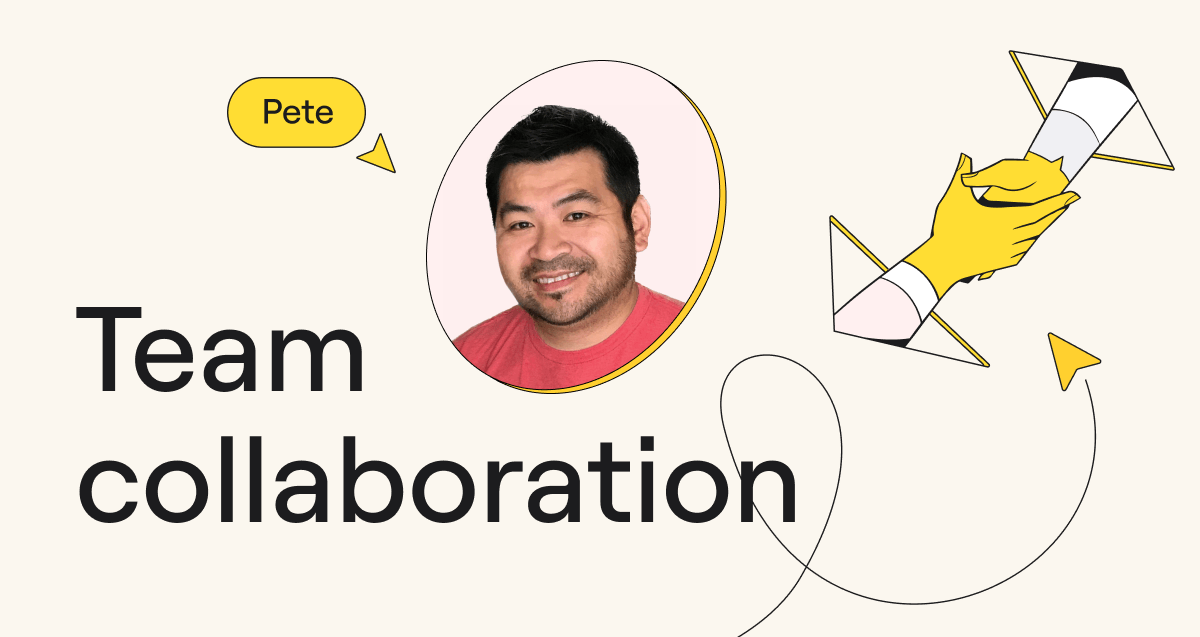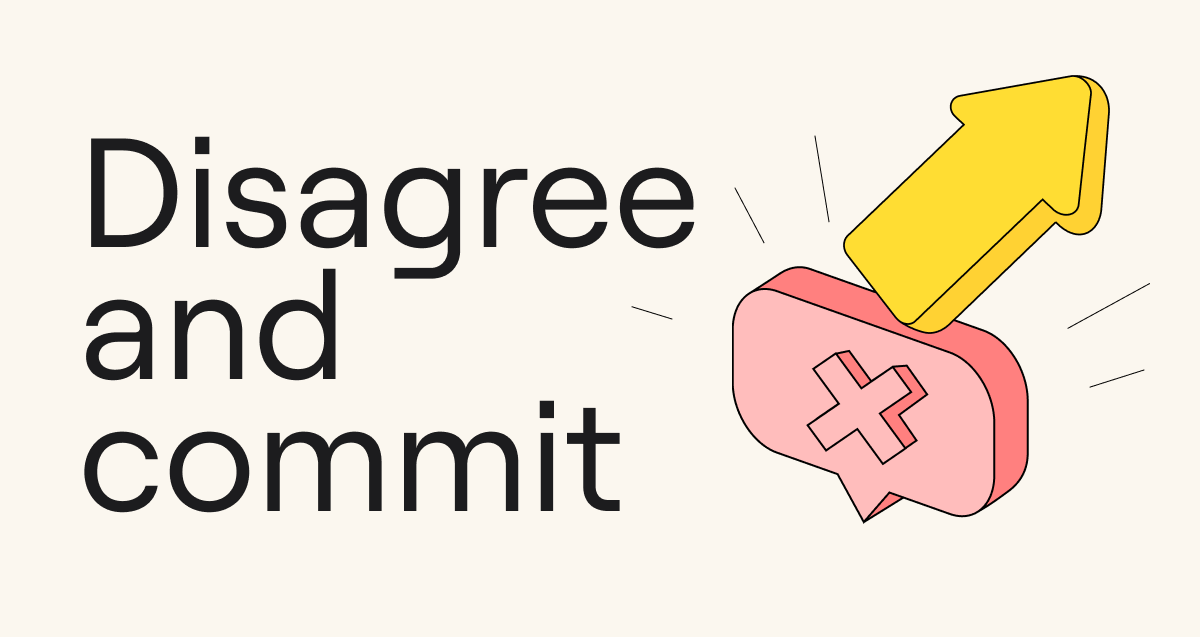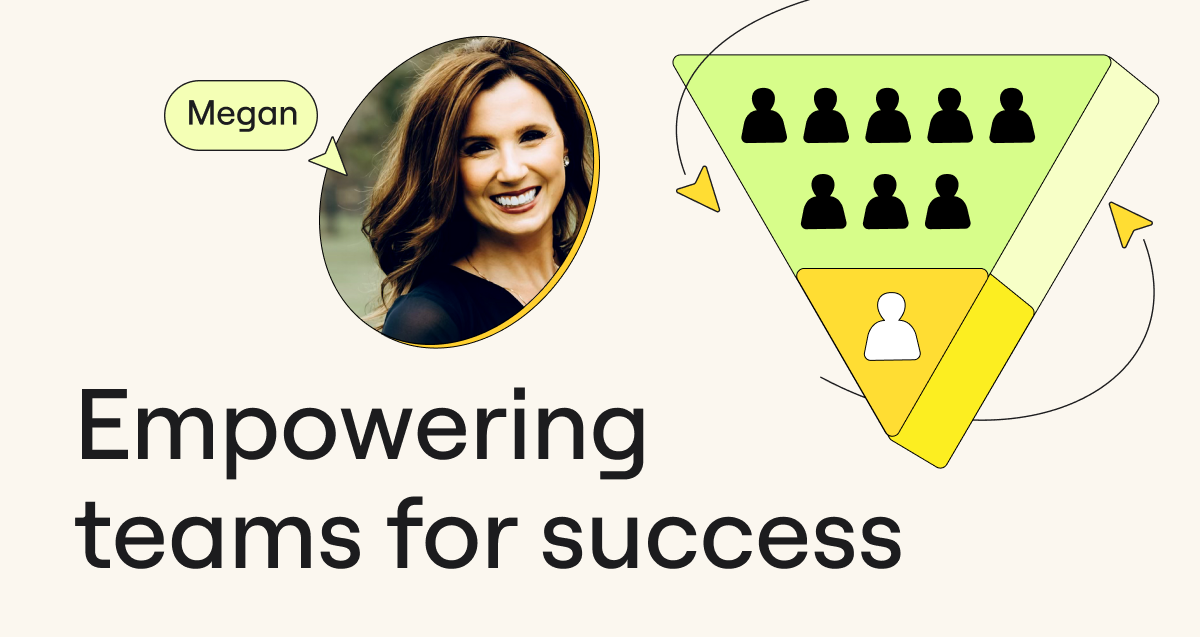It’s no surprise that here at Miro, we take collaboration very seriously. Helping teams and individuals collaborate with confidence is what our product is all about! We practice what we preach not just with how we build our products, but with how we operate as a team.
As a talent and learning coach at Miro, I am part of a team of people that promotes our culture of collaboration through onboarding, and team development tools, as well as providing guidance on the Miro ways of working. In my role I also lead facilitated collaboration sessions within teams, across teams, and with our people leaders.
A core value we have here at Miro is, “Play as a team to win the world: We work, learn, and celebrate in collaboration rather than alone”. Whether in person or remote, we know that collaboration is a key tenant of a successful team.
In this article, we will break down what team collaboration means and highlight how you can become a master collaborator.
Team collaboration: What it is
Successful team collaboration happens when a group of people working interdependently on a task or problem come together, sharing their ideas and unique skill set with the intention of achieving a common goal. Collaborative work often includes considering multiple perspectives and evaluating different ideas as a collective group.
A common team collaboration example happens when a group gets together to brainstorm an idea on how to solve a problem. When this happens, different people share their ideas around what they think the root cause might be, what variables to consider, and how each person would approach the solution. As a group, you would eventually come up with a solution and course of action.
An important distinction to make is the difference between teamwork, and collaborative work. When a team has a large project which they divide and conquer, this is considered teamwork.
Each team member takes their piece of the project, and leaning on their own expertise they make their individual contribution to the common goal. Collaboration is also different from people who work within the same team, or in similar roles, and have different objectives and work in separate workstreams.
When collaboration happens asynchronously
Collaborative work is unique in that it requires each team member to work collectively and find solutions together. Collaboration doesn’t have to be in real time. With the right tools you can collaborate asynchronously and still synthesize ideas and feedback from people in different locations.
Some tips to help facilitate asynchronous collaboration include:
- Be inclusive of fast and slow thinkers: Some people prefer having the time to think about a question on their own before meeting with the group to share. When brainstorming with a team, allow them to add their inputs before, during, or after an activity. This can mean sharing a Miroboard with the team ahead of time so they can prepare their ideas.
- Design for different time zones: You can leverage having people in different time zones by creating ways of working on a team where people can handoff at the end of their day and others can build on or give feedback on the work around the clock.
How to improve team collaboration
Be intentional about when to collaborate
It’s important to note, that while collaboration is important, equally important is understanding why each person is involved in the group. For productivity to flourish, being intentional about who is in the room in each meeting is important. Every collaborative meeting or project should always be started with “who is in the room, and why are they here?”. If you’re the one organizing the meeting, it’s your responsibility to be asking these questions. Otherwise, you may end up with a meeting bloat and a calendar so full you have no time to work.
At Miro, we encourage project teams to define and document each member’s roles and responsibilities, to make sure we include the right people at the right time. This helps avoid a reliance on slow consensus decision-making, especially when the work involves multiple teams.
We encourage teams to consider the type of collaborative work and locations of those involved, and share tips for when to go async vs sync. We know that collaboration doesn’t just happen in live sessions, it happens across time zones asynchronously when we research, co-design, collect ideas and share feedback on our Miro boards.
Invest in the right tools
You can have the right people in the right job, but without the right tools they won’t be able to perform their best! Collaborative work requires cloud based tools that are easy to access from anywhere. Google Docs and calendars make it easy to work from anywhere and provide visibility and transparency. Slack and email make it easy to communicate seamlessly. Our suite of async collaboration tools at Miro make it super intuitive to brainstorm and collaborate no matter where you are.
But simply having the tools won’t be impactful if you don’t have processes and standards in place for people to follow. People need guidance on how they can best work together. Without this guidance, smaller subgroups end up following their own process and this can lead to silos.
By providing the right tools and creating the right process, you ensure that everyone can contribute in a meaningful way, regardless of where they are.
Foster an environment where it’s safe to speak up
How comfortable do your teammates feel around you? If they feel like they can share freely without judgment or repercussion, they will be more willing and inclined to collaborate with you. However, if they feel that working with you might lead to criticism, contempt, or even having their ideas stolen, they may be less inclined to work with you.
Without a culture where it’s safe to speak up, even when it’s tough to do so,psychological safety present, collaboration won’t happen.
Break down silos
When you’re feeling isolated within a team or company, it can be difficult for collaboration to happen. Teams and individuals can begin to break down silos and interact with each other through company wide networking events, cross functional project work, and internal programming like training and workshops.
When teams get the larger awareness and context of what is happening in their organization, and who they need to connect with, they can do better and more productive work.
Invest in your own collaboration skills
Like all skills, being a better collaborator can be practiced and improved.
To improve your skills, consider:
- Practice active listening in team meetings
- take accountability for your role in a project
- Step up to deliver ideas
- Proactively identify opportunities to collaborate with others
- Learn to articulate and communicate more clearly and respectfully
When these areas are always being considered, you’ll naturally increase your ability to collaborate.
Why collaboration matters to most teams and individuals
Being collaborative at work is important not just for business, but also for an individual’s well-being. Collaboration can help in the following ways:
Building connection
Workers are social creatures who thrive on human interaction and forming personal connections. Miro’s research shows that hybrid workers are 61% more likely than onsite workers to say collaborating on work projects is the best way to strengthen connections on the job. So while collaboration is not just good for a project’s end result, it can help employees who are working remotely connect over a common goal.
Slowing down to speed up
It may be counterintuitive, but spending time gathering inputs and discussing a project before a team actually divides up the work can save you tons of time down the road. Why? Different people will be able to see the problems, objectives, and solutions from different perspectives.
This will help you consider all the angles and call out any risks and mitigation efforts required ahead of time. You’ll be less likely to run into roadblocks and issues later down the road if multiple people are brought to the table early on.
For example, if you’re at the ideation stage of a new product but forget to include someone from your engineering team, you may find out later down the road that your idea is not technically feasible. By collaborating early on and often, you develop natural feedback loops that help inform your products and work.
Increase inclusion
When many different perspectives are brought together, people are able to build products and make policies that are more inclusive.
A very common scenario can be as simple as setting the pace for how team meetings are run. If you’re an extroverted manager, you may set a team meeting cadence that works well for the extroverts on the team (think, no agenda, encouraging everyone to jump in with their ideas, or asking everyone to share an update on the spot). However, if before you set the meeting cadence, you have a group brainstorm around ways of working, you may discover that the introverts on your team need more structure and prefer to share their updates in a more organized fashion. By considering everyone’s needs ahead of time, you can create a meeting structure that works well for everyone and allows everyone an equal chance to contribute.
The same goes for building products. The earlier you bring your internal customers and stakeholders into the collaboration process, the better your end result will be!
Examples of work best suited for team collaboration
1. Visual brainstorming
When you’re working in a silo or on your own, thinking of new creative ideas can be difficult. However, when you bring a group together for a visual brainstorming activity (whether using a whiteboard or a Miro board), it can be much easier to spark and stimulate new ideas. Brainstorming helps you think of new possibilities you may not have previously considered.
2. Editing documents through Google Docs
When you’re working on a piece of copy and get writer’s block, sometimes having someone jump in and give you a few ideas can help you get unstuck. Having a group collaborate by giving feedback in a live document is a great way to elevate your work and get it over the finish line.
3. Training and cross-training
While taking an eLearning is a great way to absorb new information, having a collaborative discussion during a workshop or seminar can help you apply the new information to your own life and team context. Seeing how other people understand and apply the learning is useful for long term knowledge transfer.
4. Scoping
Scoping out a project early on can help you consider multiple angles and risks from outside your own life of vision. When multiple people are involved in the scoping phase, it’s easier to manage resistance that may come up, think about all the stakeholders you need to involve along the way, consider the milestones and all relevant dependencies, and keep your work on track.
5. Retrospectives
A retrospective is a group activity done at the end of a project where multiple people involved in the work come together to discuss their lessons learned. This kind of activity is important to work on as a team because everyone’s unique experiences can help the larger group learn and improve. If you’re running your own retrospective for a team, you can easily leverage one of our Miroverse templates to get started.
Collaboration: Not just a buzzword
Collaboration is not just a corporate buzzword. It’s a core value at Miro, where we believe in working together to achieve common goals. As the world continues to change, and how we work is always evolving, one thing that remains constant is the need to collaborate towards achieving common goals. This is our mission at Miro.



